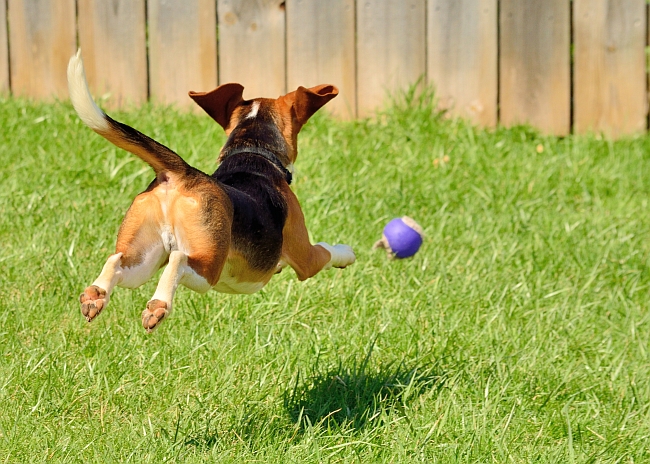
The Beagle is one of America’s most beloved breeds. Large enough to be substantial family dogs that won’t get underfoot, but small enough to live comfortably in any environment. Brush up on some facts about these winsome dogs.
This breed has descended from the small scent-hounds in Ancient Greece, who would track and hunt hares. Similar tri-color tracking scent hounds were mentioned in the 11th century as accompanying William the Conqueror, and then later with Henry VII and on through the Elizabethan and Tudor period. However the exact modern Beagles as we know them today were developed in Great Britain during the 1800’s. These scent hounds have proven their salt over the centuries due to their strong tracking and hunting abilities. Many regard the Beagle as being nearly as skilled as the Bloodhounds and Basset Hounds when it comes to tracking.
The origin of the name “Beagle” is uncertain, but many believe it to come from the French word begueule which means “wide, open throat,” beugler “to bellow” or the German word begele which means “to scold.”
Beagles range from about 13-16 inches high, and weigh around 20-25 pounds (when they are healthy). Most litters contain an average of 7 dogs, but can have as many as 14 or a few as 2. Beagles usually live around 12-15 years.
The Beagle loves to play, exercise, fetch balls and go for hikes with their owner. They are eager and enthusiastic playmates when they receive sufficient exercise to keep them in good shape.

Their coats are short, dense and easy to care for. These dogs do shed, so expect to brush their fur often. Though the Beagle needs little formal grooming, these course-coated dogs can develop a musty smell if not washed regularly. Their ears also need to be cleaned with wipes on occasion as they can get infected and grow bacteria if left for long periods of time. The coat color variations usually appear in tricolor mix of white, light brown and black patches. There are also two-color variations, of white and black or white and tan, red, brown, orange, liver, and blue (though blue is rare).
These dogs are so popular because they are easy-going and good natured. They are very friendly with strangers, and tend to get along well with other dogs and cats if acquainted early on. They are also excellent playmates for children, when trained well. Though some Beagles can show signs of being aggressive, demanding or anxious, the majority of the breed prove to be pleasant pets.
These dogs are very appetite-driven. If they are given an INCH when it comes to begging or demanding treats, they will ride that train as long as they can. Some vets joke that a Beagle would eat himself to death if given the chance. Therefore it is important to moderate food quality, portion control and frequency of treat-rewarding.

Beagles can also be stubborn, and determined escape artists. If the door is left open, expect them to go waltzing outside any chance they get. Some Beagles have even been known to lift latches in outdoor gates and let themselves out that way. The stubborn mentality makes these pups challenging to housebreak, and the strong “hound” inclinations mean that these dogs difficult to walk if they pick up a scent to follow.
This breed needs to be exercised rigorously, and requires toys to play with and activities to keep them busy. If they are not adequately walked or taken for good hikes, the Beagle will pack on the pounds. Likewise, if unattended and bored for too long, these dogs can get very destructive, and may dig, forage, chew or get snappy. Beagles shouldn’t be left alone in a yard all day either, as they can get lonely and may bay and howl for hours if uninterrupted.
Beagles have been highlighted in famous works of art during the Elizabethan era, in films, TV shows, and novels. However, the most famous Beagle in the world is Snoopy, endearing dog of Charlie Brown in the hit comic series Peanuts.

